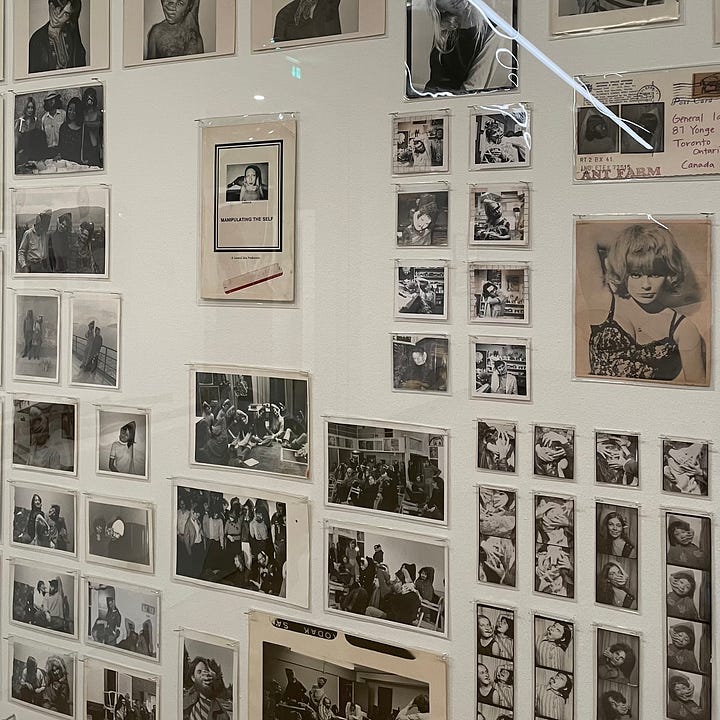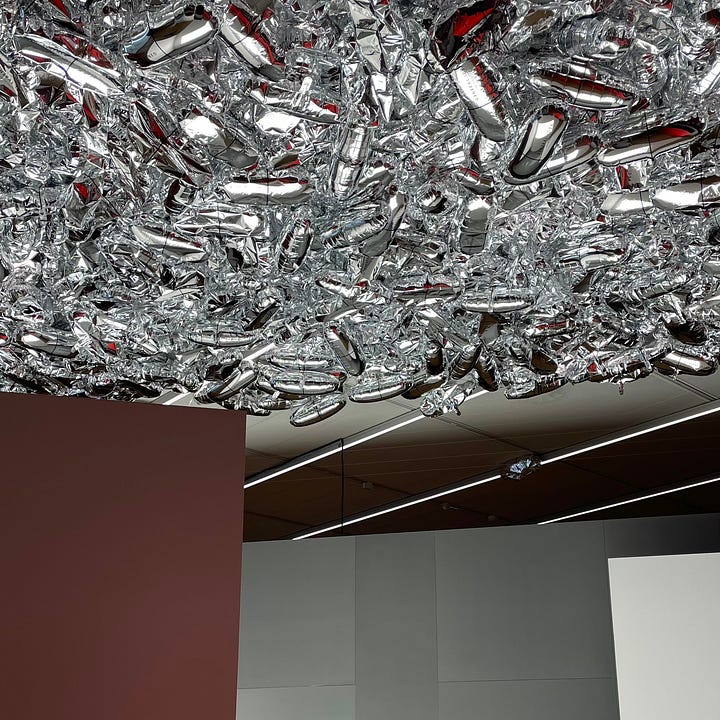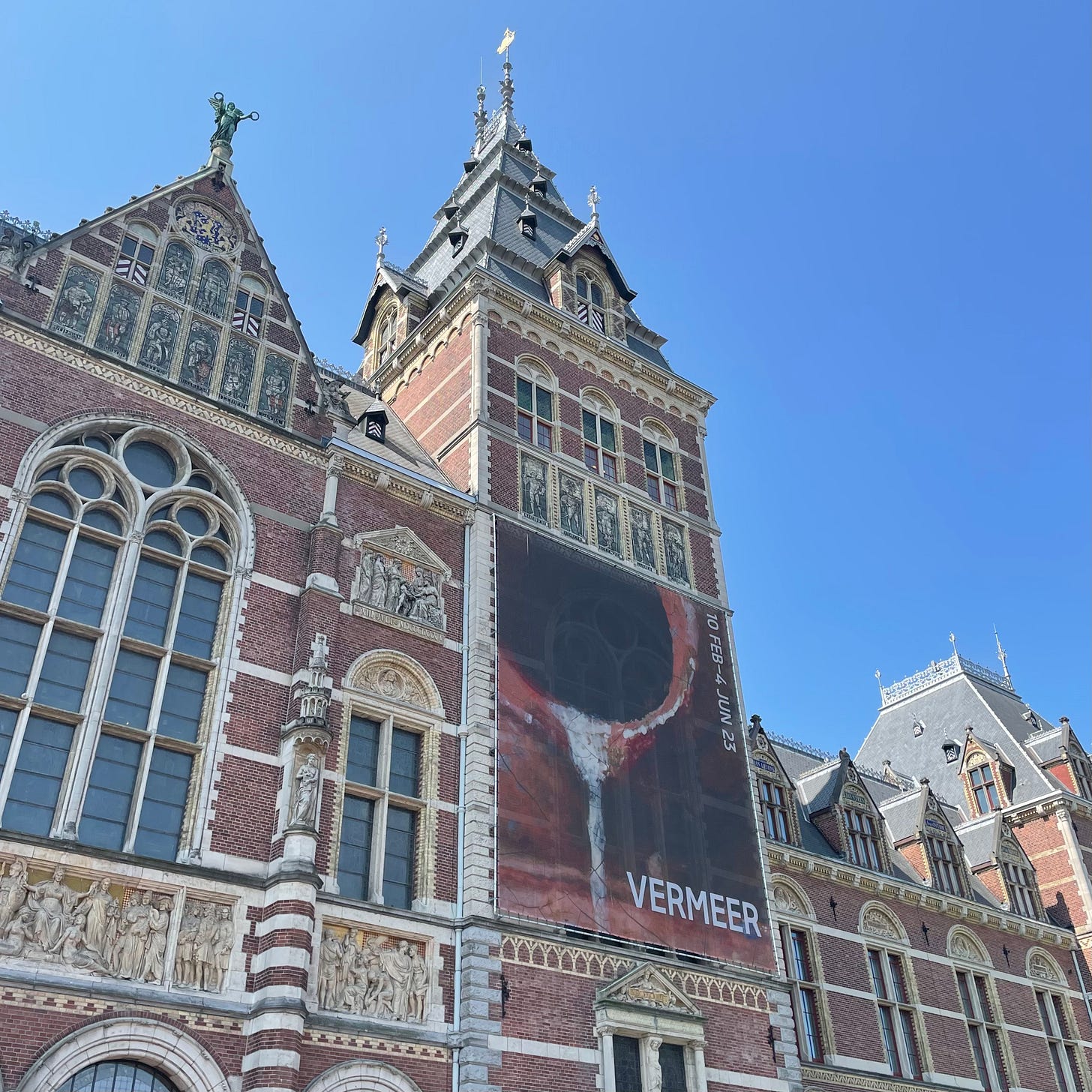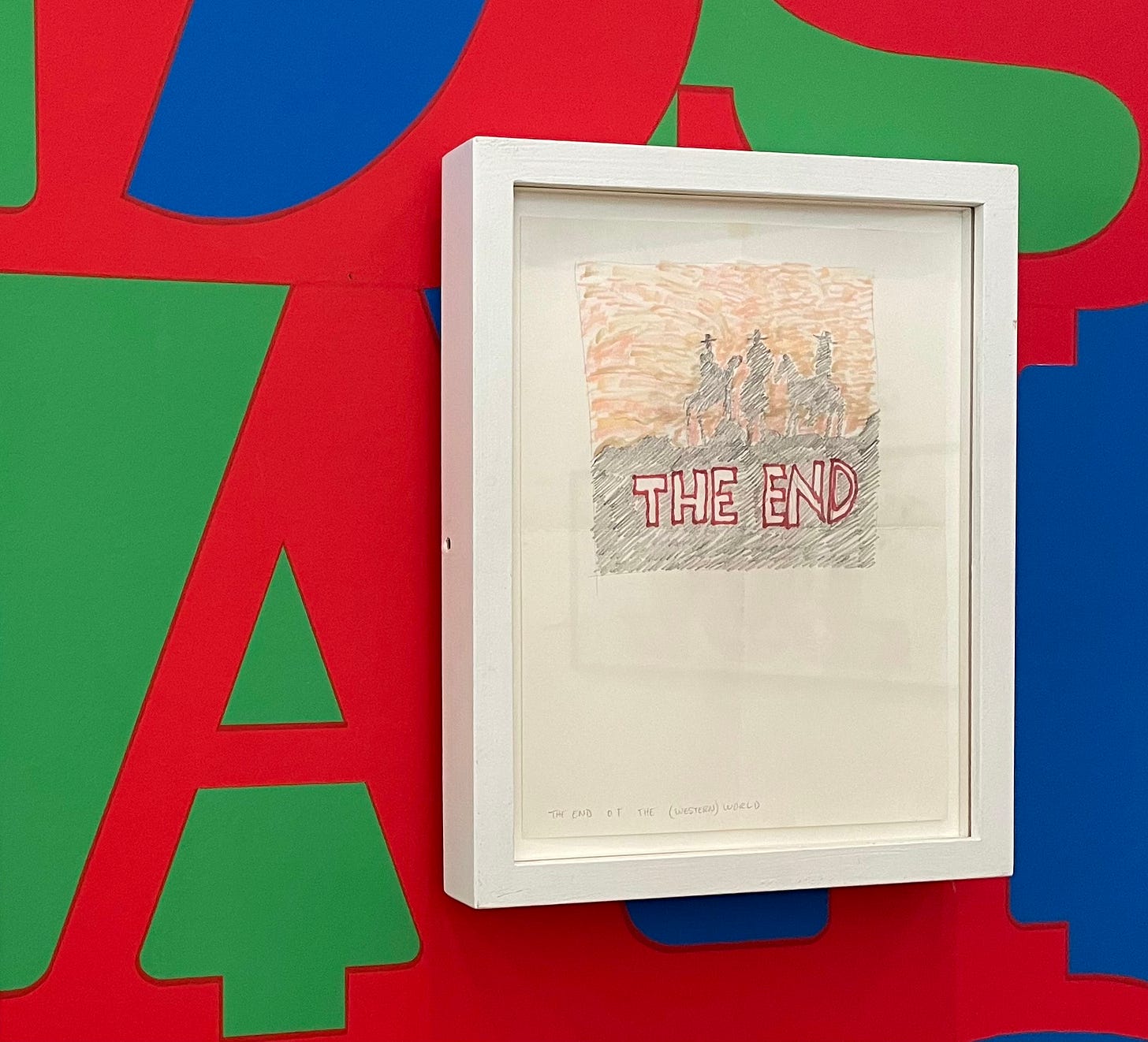Art in the City: Amsterdam
Sara Cwynar in the SS23 fashion season, Adduchi and van Zalinge through textiles and threads, and General Idea from start to finish
Recently, when someone would talk to me about ‘Amsterdam’ and ‘art’ in the same sentence, the conversation would probably be about the Vermeer show at the Rijksmuseum. Even though I would have been curious to see “the largest Vermeer exhibition ever”, I couldn’t get tickets since it had been sold out for months.
Yet, in the week that I was in Amsterdam, I went to FOAM, Amsterdam Museum, and Stedelijk Museum, giving me a taste of the city’s art scene:
Next Level: Sara Cwynar S/S 23 (FOAM, 25.05.23 - 24.09.23)
I entered Sara Cwynar’s S/S 23 curious to see if it had anything to do with the fashion world—after all, the title does follow the typical naming convention used to mark the start of the 'spring-summer' fashion season. From her Doll Indexes and her Contemporary Floral Arrangements on display, it became clear to me that the exhibition wasn’t going to be a clean-cut celebration of the fashion world.
In Doll Index 1, 1779-1950, Cwynar layers photographs of different objects (from evening gloves to hair clips and landline telephones to smartphones) on an image of a doll created in the 1940s to reference French fashion from the eighteenth and nineteenth centuries. The single photograph displayed on the wall becomes a well-researched diagram of objects—objects that act as markers of our fast-paced consumerist culture, revealing how quickly the things we currently think are in season go out of season.


Cwynar talks back at today’s fashion industry through her Louis Vuitton Jeff Koons Handbags series. She cuts and resizes images of LV handbags that the brand created in collaboration with Jeff Koons in 2017. The bags reproduce the works of Old Masters such as da Vinci and Rubens, transforming these artists into brands for consumption. Through Cwynar's digital collages, both the branded handbags and the works of the Old Masters become unrecognisable and amorphous forms.
Continue This Thread (Amsterdam Museum, 17.02.23 - 03.09.23)
From social embroidery projects for emotional healing to performative protests against fast fashion, Continue This Thread brings together textiles from the collection of Amsterdam Museum and puts their multiple layers on display.

The show begins with the works of textile artists, fashion designers, and guest curators Karim Adduchi and Tess van Zalinge. Displayed side by side, Adduchi’s and van Zalinge’s textile artworks reflect their traditions and values as both artists use historical and regional methods from their respective cultures: in patchwork, van Zalinge uses old wedding dresses to create intricate ensembles that echo the layered Dutch landscapes; in Freedom Dress, Adduchi brings together textiles from Judaism, Catholicism, and Islam, uniting the three faiths to reflect his hope for a future of open dialogue and connectedness.

Each room is separated into a different theme, showing how people have used textiles beyond their functional materiality throughout the years. The room titled ‘Healing powers’ includes a bedspread made by Adduchi’s mother, who entered a meditative state through the repetitive act of embroidering the intricate patterns on the fabric. The room named ‘Stories of resilience’ includes a handkerchief created in Haaren’s concentration camp in 1942 with the words “I will maintain” embroidered in Dutch.
Continue This Thread supports the shifting narrative of textiles—what was once solely seen through the lens of domestic spheres is now considered a multilayered material for subversive, collaborative, meditative, artistic creation.
General Idea (Stedelijk Museum, 01.04.23 - 16.07.23)
The Canadian art collective General Idea (including Felix Partz, Jorge Zontal and AA Bronson) created works and initiatives that satirised popular culture during the second half of the twentieth century, primarily the 70s and 80s. The exhibition at the Stedelijk covers their practice from start to finish, from their staged Miss General Idea Beauty Pageant in the early 70s to their walls covered in white pills in their 1991 One Month of AZT.
The show follows General Idea’s practice in chronological order, reflecting how the cultural shifts they experienced during their decades of activity led to similar shifts in the type of work they produced.


For the 1970 mail art project Manipulating the Self, the artists asked their friends and collaborators to photograph themselves in the same position: holding an arm over their head in a way that seems as if they are being held by someone else and holding themselves at the same time. The peculiar photographs come together on the Stedelijk wall and sum up their practice from the 70s: social initiatives that promoted collaboration and connection among friends and artists.


During the decades that followed and with the rapid rise of consumer culture, General Idea took a deep dive into pop art. Some of the works from this time blatantly reference those of other artists: they take the font used by Robert Indiana in LOVE to create AIDS; they infest Marcel Duchamp’s blue and red Coeur Volant with green; they hint at Andy Warhol’s Silver Clouds through their floating silver Magi© Bullet.
The exhibition ends with a simple and muted drawing by Felix Partz, which stands out against the room filled with styrofoam installations, silver pill balloons, and bright graphic wallpapers. With a tone of finality, the words outlined in red mark 'THE END' of General Idea. The reason for the collective's abrupt end is stated in the supporting label on the wall: both Partz and Zontal were diagnosed with HIV and died briefly after.







